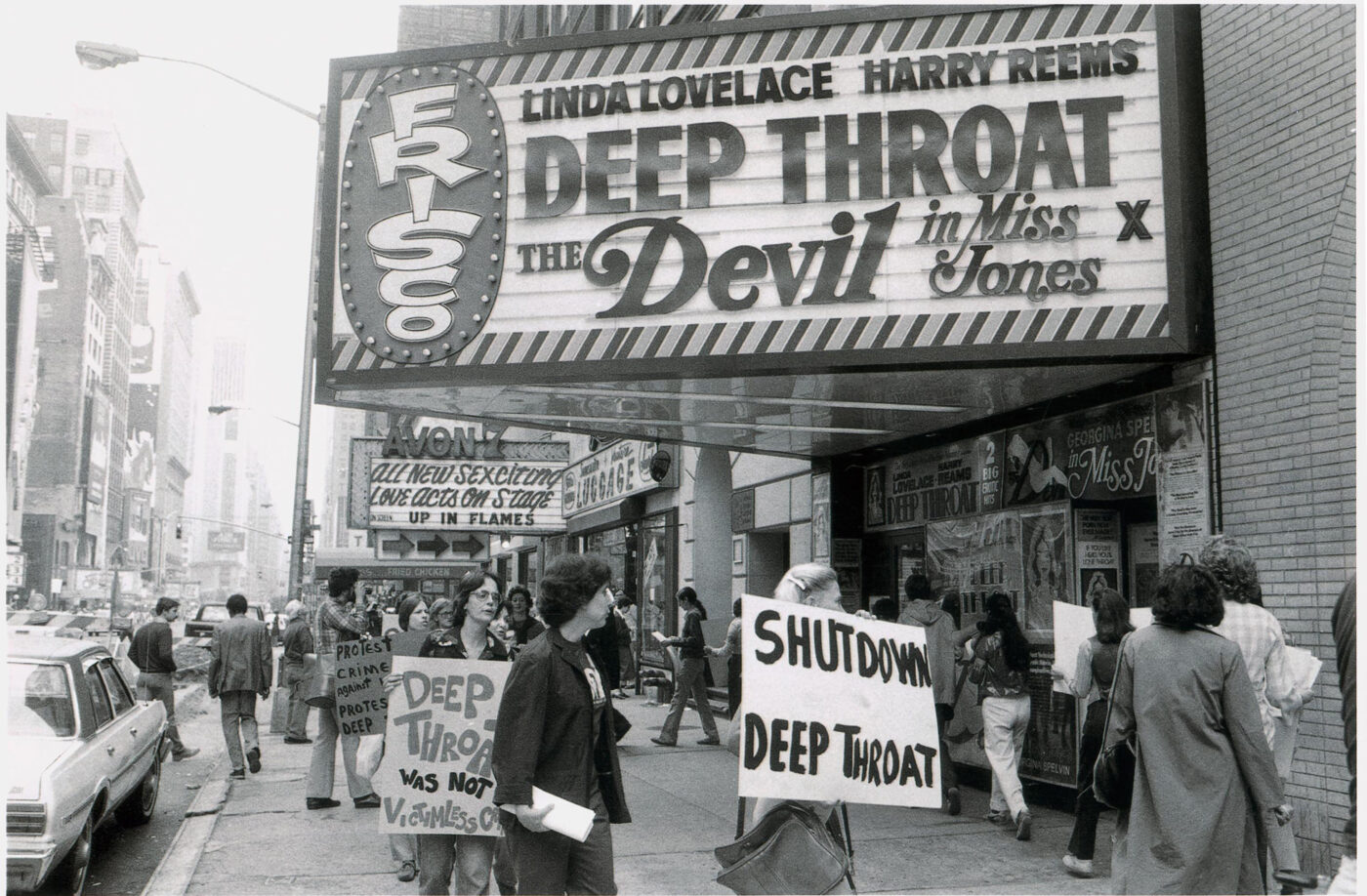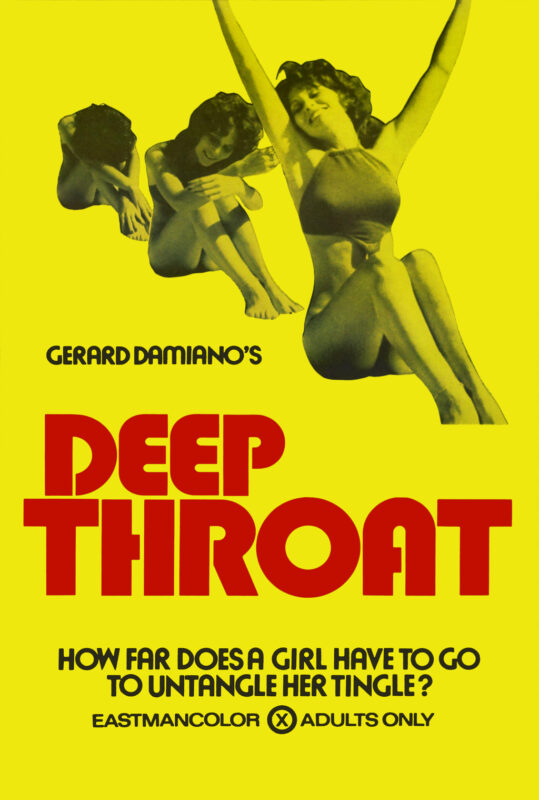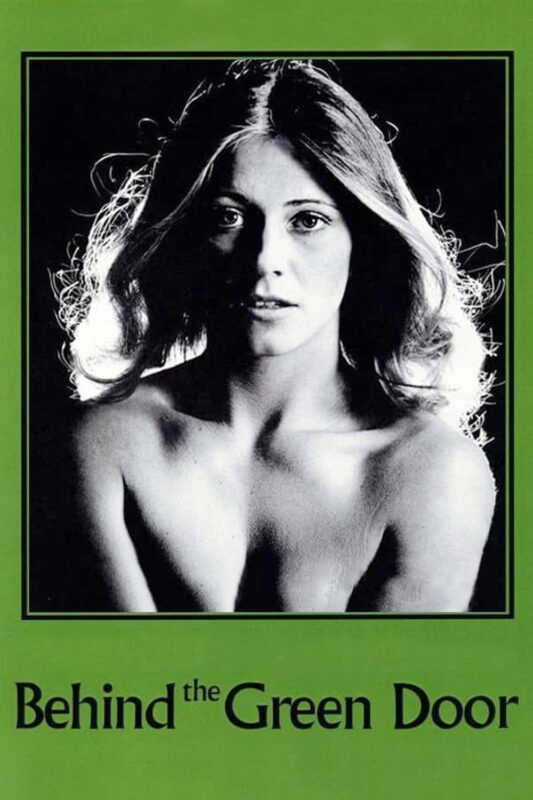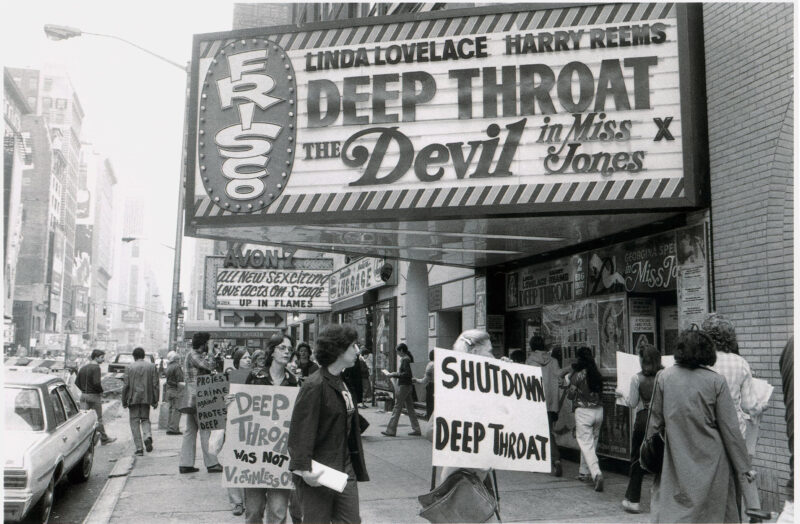In 1972, I passed the World Theater in midtown Manhattan, which was showing Deep Throat, the film which marked the beginning of “porno chic.” I was startled to see a line of ordinary-looking filmgoers of various ages, some of whom were holding shopping bags. What was going on? I had been watching the emergence of theatrical hardcore pornography beginning in the late 1960s leading to such films such as Ziehm’s Mona the Virgin Nymph (1970). And during that time I never saw a line of people waiting for the beginning of the next screening of a film. In fact, porn theaters didn’t post the starting times, nor were they advertised in the newspapers. People interested in seeing the film simply bought a ticket and walked in.
On a later occasion, I passed the World Theater and was startled once again, this time by the marquee which declared in large, bold lettering, “Judge Cuts Throat, World Mourns.” This is undoubtedly one of the wittiest moments in the history of porn humor. A New York State judge had declared the film obscene.
In 2006, I published an anthology of essays on pornography titled Pornography: Film and Culture. As the title indicates, pornography can only be fully understood within the context of culture. The term “porno chic” was first used in the New York Times in 1973. It referred to the many celebrities who had publicly praised Deep Throat and led to lifting the social taboo against watching porn. The secret to Deep Throat’s success was that it told a story in a conventional manner and that it had a theme dealing with the central female character’s search for sexual pleasure. The resolution hinged on the fact her clitoris was in her throat and that oral sex with a large penis was the only thing that could bring her to orgasm. Made on a small budget the film became a box office and critical success and was even shown nationwide where there had been no history of porn exhibition.
Within a short period of time several porn “auteurs” appeared with storytelling feature films and actors who became stars: Alex de Renzy’s Lady Freaks with Annette Haven (1973); the Mitchell Brothers’ Behind the Green Door with Marilyn Chambers (1973); and Henry Paris with The Opening of Misty Beethoven (1976) and Barbara Broadcast (1977) to name a few. This “Golden Age” of porn films ended with the rise of home video cassettes which were soon replaced by DVDs which were then replaced by streaming video. Although most of the successful Golden Age films were re-released on video, new forms of porn arose, which were ironically and unjustifiably dismissed as trash in much the same way the pre-Deep Throat theatrical films had been scorned.
But the Golden Age films had a profound, widespread international cultural impact. The newfound cultural acceptability led to a whole new genre called “hardcore art” films: art films that included explicit actual sex acts. Although Andy Warhol emerged from the underground sexually explicit art film tradition, his Blue Movie with Viva (1969) was an early example of what was to follow: Romance, by Catherine Breillat (1999), which featured porn star Rocco Siffredi; Intimacy by Patrice Chereau (2001); 9 Songs by Michael Winterbottom (2004); and Shortbus by John Cameron Mitchell (2006) to name a few. Several Golden Age actors crossed over into the mainstream such as Linda Lovelace in David Cronenberg’s Rabid (1997). Blake Edwards cast Annette Haven in a cameo in “10” (1979) and Joe Dallesandro in a secondary role in Sunset (1988). John Waters cast Traci Lords in Crybaby (1990).
Major mainstream film directors and television creators-producers made films and TV series about the Golden Age. Paul Thomas Anderson wrote, produced, and directed Boogie Nights (1997), a film about a rising porn star in the 70s and David Simon created and executive produced The Deuce (2017-19), a three-season series about porn in midtown Manhattan in the 1970s during which time Candy, a female porn star, rises to become a director. Anderson spoke openly about his love of Golden Age porn and Simon spoke about his commitment to accurately recreate the historical midtown Manhattan setting of the time.
But perhaps the most surprising legacy of the Golden Age was the rise of academic porn studies and pedagogy in American Universities and of prestigious porn film festivals all over the world, from Berlin* to San Francisco. A seminar that I taught on Golden Age porn films at Ohio University in the late 70s was one of the earliest of such courses. Linda Williams’s Hard Core (1989) was a key moment in the expansion of academic porn studies. The book focuses on The Golden Age of porn theatrical features, which Williams argues bears comparison with the Golden Age of Hollywood musicals with the sex scenes analogous to the musical numbers. This structure allows her to examine themes and character development in much the same way as film scholars analyze classical Hollywood narratives; porn simply becomes another genre. The academic journal Porn Studies founded in 2014, further legitimized porn’s newfound academic standing.
Williams’s embrace of the pleasures and meanings of hardcore led to the term “pro porn feminists.” She offers a powerful critique of the anti-porn feminists who embraced pornography censorship. As professors began to incorporate pornography into the curriculum, censorship once again became an issue and one with which I conclude this article, since calls for censoring pornography are once again on the rise.
The introduction to my book Pornography: Film and Culture is entitled “‘A Dirty Little Secret’ – Why Teach and Study Pornography?” and takes its title from a local press attack on a course I taught at Arizona State University with a unit on pornography. Ironically, the title of an earlier article by a major newspaper which included that class along with others at top research universities referred to porn as a “hot new” course on campus. Such classes were neither dirty little secrets nor hot new courses on campus. They were serious pedagogy aimed at advanced undergraduate students and graduate students. They were neither hidden nor used to attract large numbers of students. The accusatory article about my class led to an attempt to censor it at ASU.
In the current cultural climate, there is an important lesson here. History shows that censorship has a domino effect leading from one kind to another. Freedom of expression in books, films, and magazines goes hand in hand with protecting the rights of university faculty members to research and teach critical thinking. Attempts to censor any of them threatens all of us, giving new meaning to the marquee “Judge Cuts Throat, World Mourns.”
Peter Lehman is Professor Emeritus in the Film and Media Studies Program at Arizona State University.
###
* This past October, the Pornfilmfestival Berlin celebrated its 20th anniversary with 100 shorts and 30 features, all exploring “questions of sexual ethics, identities, body norms, conceptions of morality around the world and the artistic-alternative approach to the genre of pornography.” Of note Velvet Vision, a spellbinding documentary on cult filmmaker James Bidgood and the making of Pink Narcissus.









